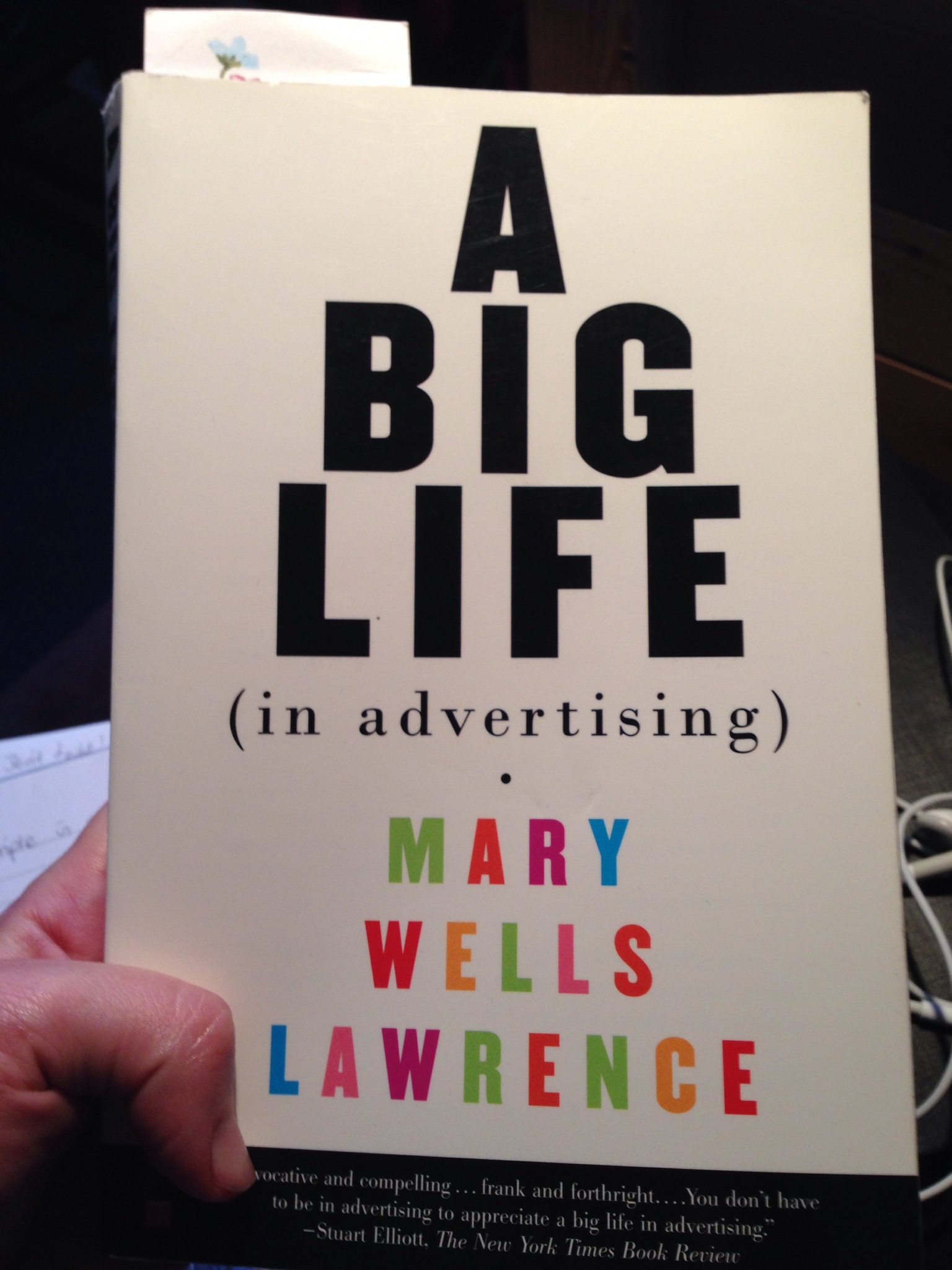 Right now my bedside table book is A Big Life in Advertising by Mary Wells Lawrence. Mary was an advertising executive who was at the head of many innovative marketing campaigns that shook the advertising world of the 50s and 60s.
Right now my bedside table book is A Big Life in Advertising by Mary Wells Lawrence. Mary was an advertising executive who was at the head of many innovative marketing campaigns that shook the advertising world of the 50s and 60s.
One of the first contracts she worked on at the think tank Jack Tinker and Partners was Alka Seltzer. At the time Alka Seltzer did not have a very good brand image with younger people. In fact it was seen as a symbol of people who ate and drank too much and as one lady told the advertisers “I take it in the dark.”
Their job was to reinvent the image for a younger audience and I loved the ethos behind Mary’s approach:
At Tinker we plotted and schemer to develop advertising that would seduce every man, woman and child of every age into watching Alka Seltzer advertising – in face, to make them look forward to watching it.
We did it by being entertaining.
They released around 17 adverts as part of the campaign. Each one very different but focused on how Alka Seltzer was the perfect accompaniment to a busy, stressful, ambitious, full-of-life routine that resonated with people in the 60s . Whereas before you only took Alka Seltzer in response to pain, now it was promoted as the smart thing to carry everywhere to help you deal with the ups and downs.
Plop Plop Fizz Fizz
The next smart thing the advertising team did was to research the quantity needed, and after consulting a doctor they discovered that two tablets would actually work better than one.
They changed the directions on the packets from taking one tablet to two and redesigned the foil wrapper to contain two tablets. Future commercials were accompanied by the new jingle “plop plop fizz fizz.” As seen below.
The combination of a new image and new directions of use caused an about turn in sales and was a veritable win for the agency. The commercial below is dated, but as with any copywriting or advertising example, look beyond the specific words for the principles used.
- How could you promote your product as an essential accompaniment rather than just a response to a problem?
- Could altering your instructions for using your product encourage consumption?
Have a think and enjoy this!

Leave a Reply